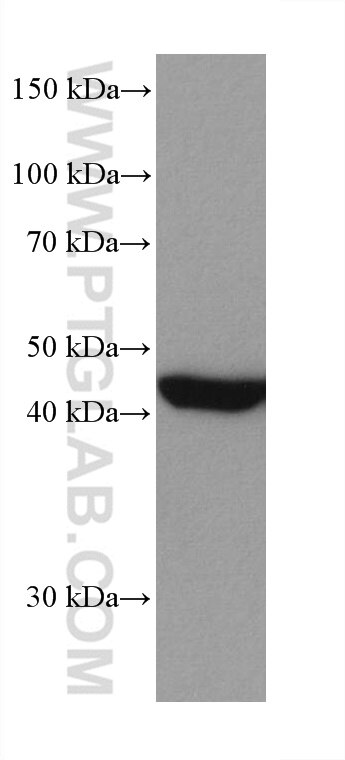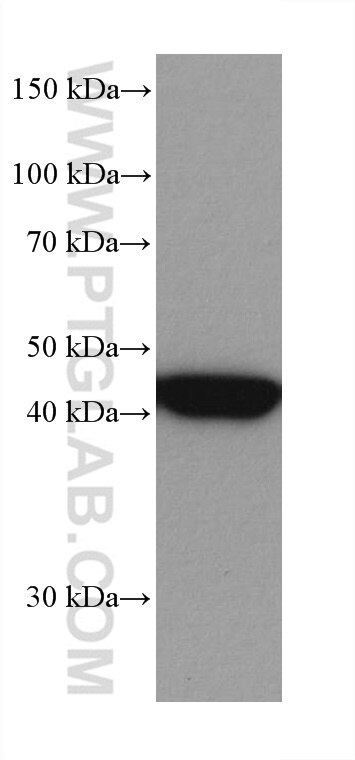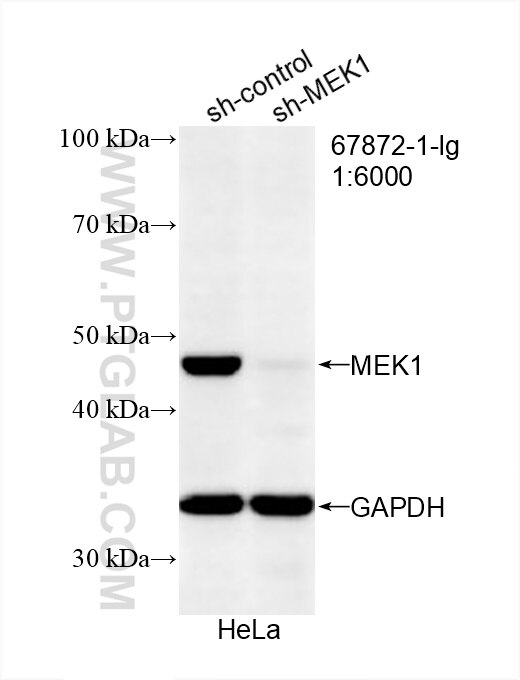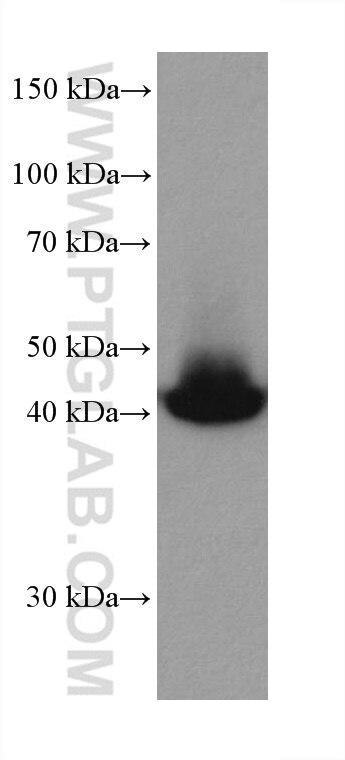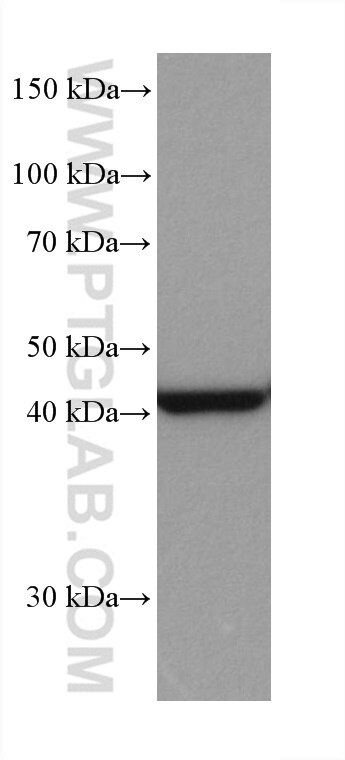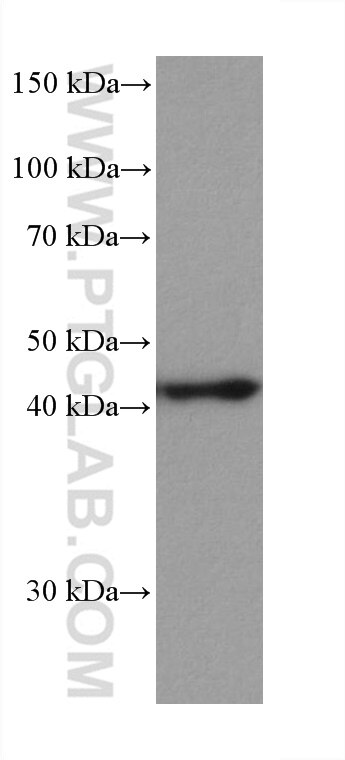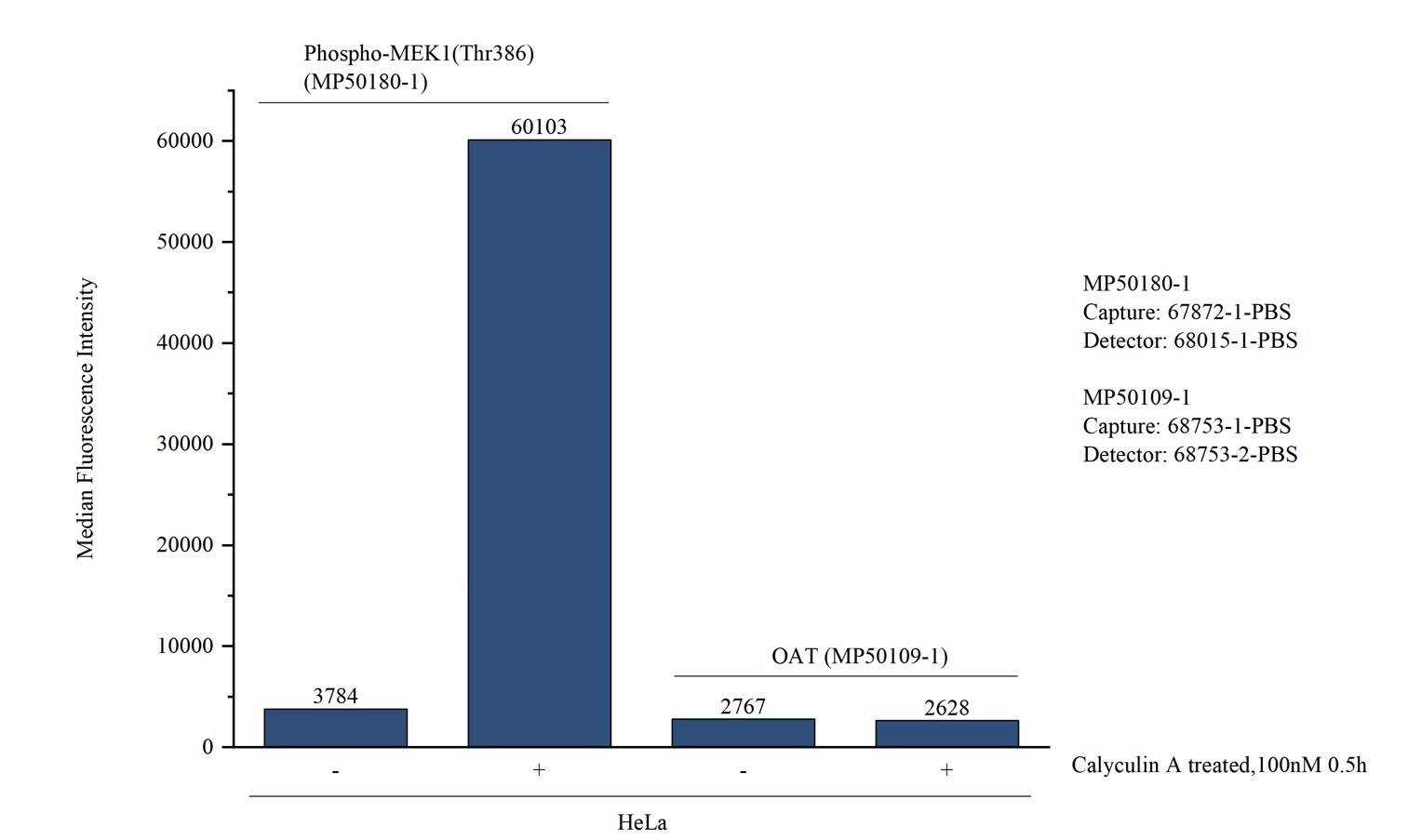Validation Data Gallery
Tested Applications
Recommended dilution
| Application | Dilution |
|---|---|
| It is recommended that this reagent should be titrated in each testing system to obtain optimal results. | |
Product Information
67872-1-PBS targets MEK1 as part of a matched antibody pair:
MP50180-1: 67872-1-PBS capture and 68015-1-PBS detection (validated in Cytometric bead array)
Unconjugated mouse monoclonal antibody pair in PBS only (BSA and azide free) storage buffer at a concentration of 1 mg/mL, ready for conjugation.
This conjugation ready format makes antibodies ideal for use in many applications including: ELISAs, multiplex assays requiring matched pairs, mass cytometry, and multiplex imaging applications.Antibody use should be optimized by the end user for each application and assay.
| Tested Reactivity | human, mouse, rat |
| Host / Isotype | Mouse / IgG1 |
| Class | Monoclonal |
| Type | Antibody |
| Immunogen | Peptide 相同性解析による交差性が予測される生物種 |
| Full Name | mitogen-activated protein kinase kinase 1 |
| Calculated molecular weight | 43 kDa |
| Observed molecular weight | 40-50 kDa |
| GenBank accession number | BC139729 |
| Gene Symbol | MEK1 |
| Gene ID (NCBI) | 5604 |
| ENSEMBL Gene ID | ENSG00000169032 |
| RRID | AB_2918630 |
| Conjugate | Unconjugated |
| Form | Liquid |
| Purification Method | Protein G purification |
| UNIPROT ID | Q02750 |
| Storage Buffer | PBS only , pH 7.3 |
| Storage Conditions | Store at -80°C. |
Background Information
MEK1 is also named as MAP2K1 (mitogen-activated protein kinase kinase 1), MAPKK1, PRKMK1, MKK1 and belongs to the MAP kinase kinase subfamily. It is a dual-specificity kinase that mediate ERK1 and ERK2 activation during adhesion and growth factor signaling(PMID:19219045). It also plays an essential role in extra-embryonic ectoderm during placentogenesis.
